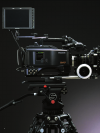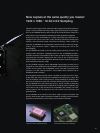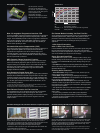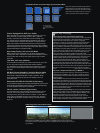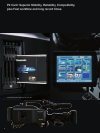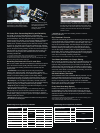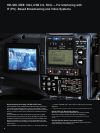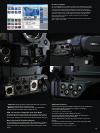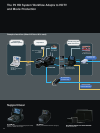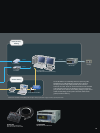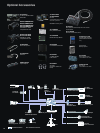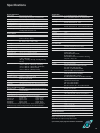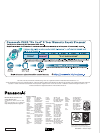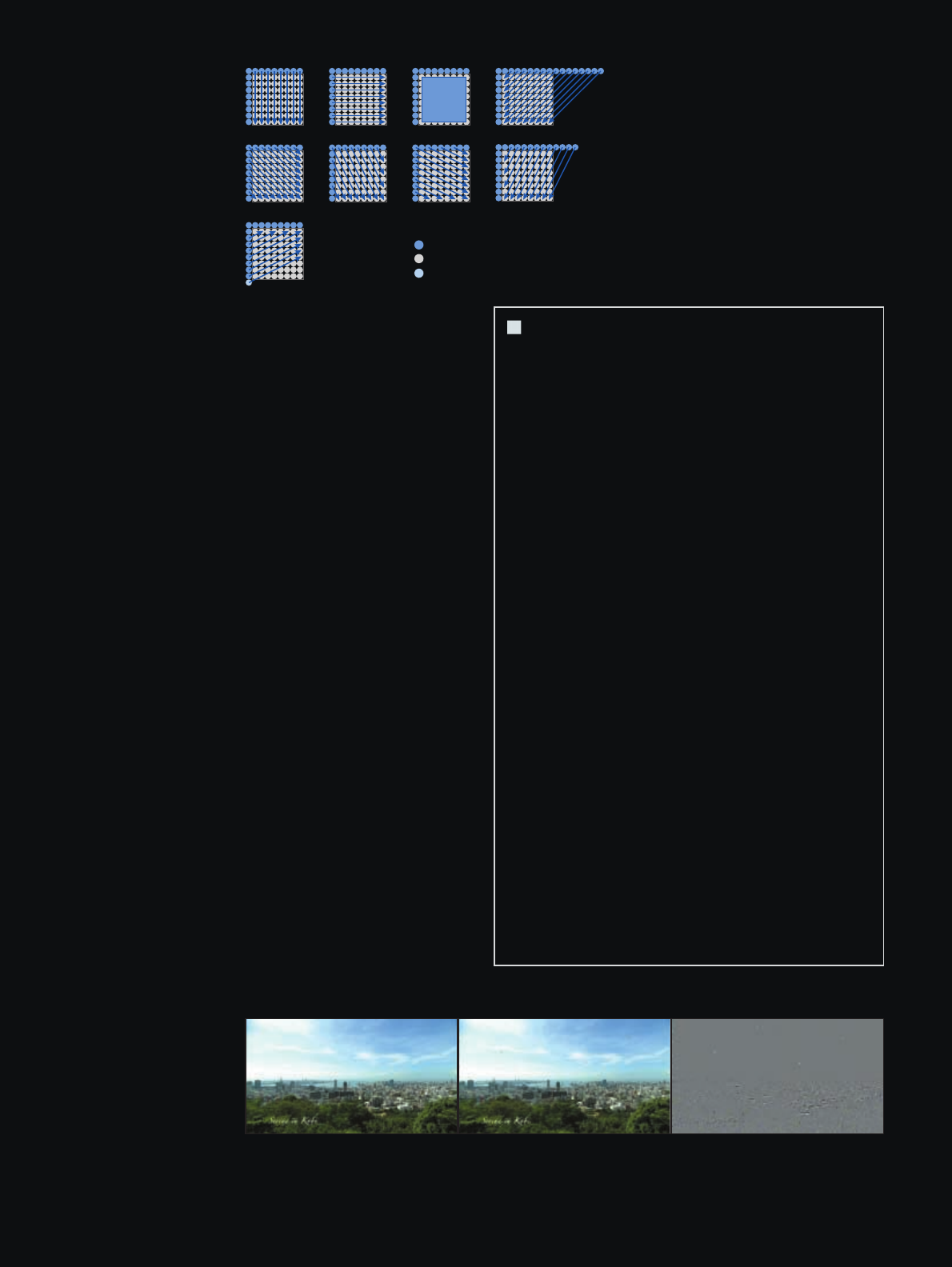
6
Comes Equipped with AVC-Intra Codec
When using AVC-Intra 100, the AJ-HPX3000 is the industry’s first, one-
piece camcorder for master quality, full raster 1920 x 1080 4:2:2
recording. Even better, this model allows users the flexibility of the
AVC-Intra 50 codec for bandwidth efficient applications. AVC-Intra is a
new codec that further advances HD production. It complies with the
MPEG-4 AVC/H.264 international standard based on advanced image
compression technology, and offers both superb image quality and highly
efficient compression. It uses an intra-frame compression system to bring
important advantages to professional editing.
High-Image-Quality, AVC-Intra 100 Mode
With the same bit rate as DVCPRO HD - this mode supports full-HD
recording with 1920 x 1080 pixels. It enables the AJ-HPX3000 to capture
master-quality video and brings new opportunities to high-end video
production.
Low-Rate, AVC-Intra 50 Mode
This mode delivers video quality very similar to DVCPRO HD, yet is able
to do so at bit rates usually associated with standard definition,
(e.g. DVCPRO 50.) AVC-Intra 50’s lower bit rate doubles the recording
time per P2 card over DVCPRO HD and lower storage requirements
for editing.
HD Multi-Format Capability, Including Native 1080p
The AVC-Intra 100 and 50 codecs let you record in a choice of HD
video formats: 1080p 23.98/25/29.97, as well as 1080 50i / 59.94i.
These world-wide HD formats provide extra flexibility in all of you
production needs.
Selectable DVCPRO HD/DVCPRO 50 Recording
The AJ-HPX3000 supports the conventional DVCPRO HD codec and also
offers DVCPRO 50 capability for SD recording. This lets it flexibly adapt
to various applications and system environments.
48-kHz/16-Bit, 4-Channel Digital Audio
The AJ-HPX3000 can record full 48-kHz/16-bit digital audio on all four
channels. You can freely select the audio source for each channel,
choosing from mic, line, wireless receiver, and others. A 5-pin XLR jack
with 2-channel compatibility is used for the front mic input. Using the
AJ-MC900G optional stereo microphone lets you record stereo with a
single mic.
Conceptual Illustration of Luminance Signal (Y) Intra Prediction Mode
mode 0 mode 1 mode 2 mode 3
mode 4 mode 5 mode 6 mode 7
mode 8
Copy of below pixels
Predictive pixels
Adjacent pixels
Average
This process generates predictive images based on
adjacent blocks of 8 x 8 pixels. Selecting the most
suitable predictive mode from among nine luminance
signal modes (see illustration) and four color signal
modes, it generates accurate predictive images.
AVC-Intra Technology
Intra-Frame (I-Only) Compression Superiority
Image compression technology can be divided into two basic approaches,
Intra (frame-bound) compression, in which all processing is completed
within the bounds of each field or frame, and Inter (Long GOP)
compression, in which the processing is applied across multiple frames.
AVC-Intra uses Intra frame technology. When the image content of
adjacent frames is similar, Long GOP compression achieves a low bit rate,
making it suitable for transmission and for applications where low bit rates
are desirable yet very little editing is required, e.g. consumer camcorders.
However, when image quality cannot be compromised, such as in movies,
commercials, fast-action sports, or any content with rapidly changing
lighting, Intra-frame compression provides the best video quality.
For stable and reliable recording regardless of subject type, an intra-frame
compression method that completes compression in each frame is more
suitable. If editing requires frame-by-frame trimming, an intra-frame
compression method enables stream editing* without degrading the
image. Because each AVC-Intra frame is composed of 10 slices*, a multi-
core CPUs processing approach can be used to perform high-speed
parallel processing, this makes AVC-Intra compression much better suited
to the era of multi-core CPUs than inter-frame compression, which poses
difficulties to parallel processing because of the dependence between
frames.
* Editing of data in a compressed state.
Twice the Compression Efficiency of MPEG-2
Using advanced compression techniques, AVC-Intra has doubled the
compression ratio of MPEG-2, even with I-Only compression. Its intra-
frame predictive and context-adaptive entropy coding are particularly
effective methods.
• Intra prediction: This process generates predictive pixels based on
adjacent pixels (see illustration). The residual data (obtained by subtracting
a predictive image from the original input image) is recorded together with
the predictive mode information. Because the prediction accuracy is high,
there's minimal residual data, and thus high compression is achieved. This
process is conducted within the frame, so prediction accuracy remains
high even with fast-motion images.
•Context-adaptive entropy coding: The entropy coding process utilizes
CAVLC (Context Adaptive VLC) and CAVBAC (Context Adaptive Binary
Arithmetic Coding), both of which are context adaptive. MPEG-2 uses a
fixed table when performing the VLC coding, with the result that
compression efficiency is low with some types of images. In context-
adaptive coding, on the other hand, operation varies with different kinds of
images and high compression efficiency is maintained at all times.
Left: Original image Center: Intra-frame predictive image Right: Difference image obtained from
subtracting the intra-frame predictive image from the original image. This shows the high accuracy of
intra prediction.
Sample Image of the Intra Prediction Process




